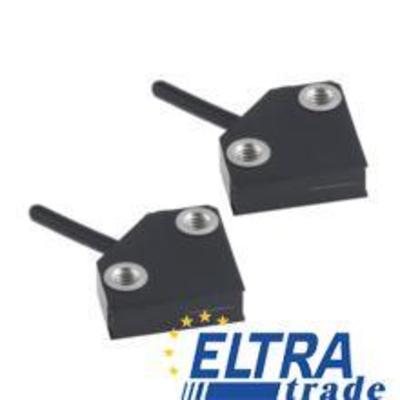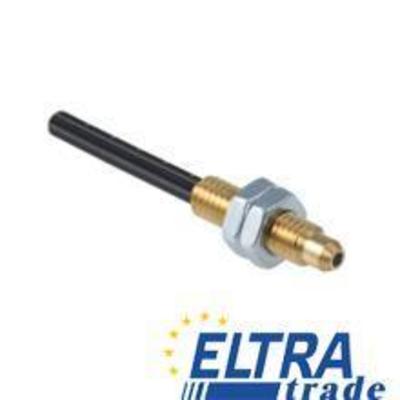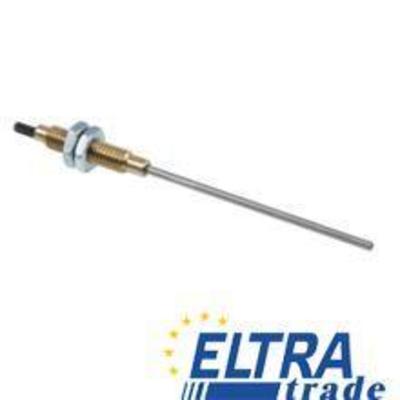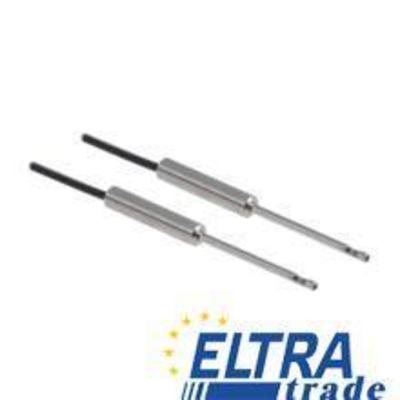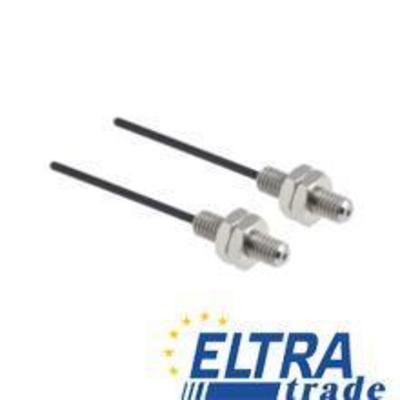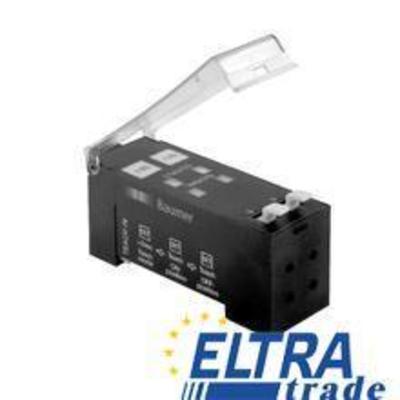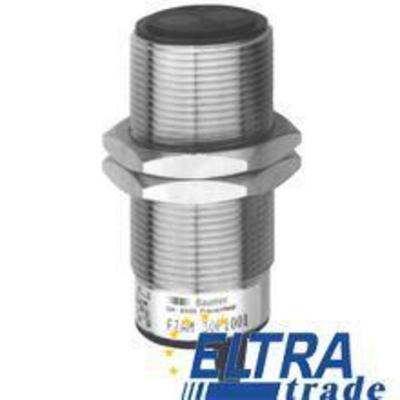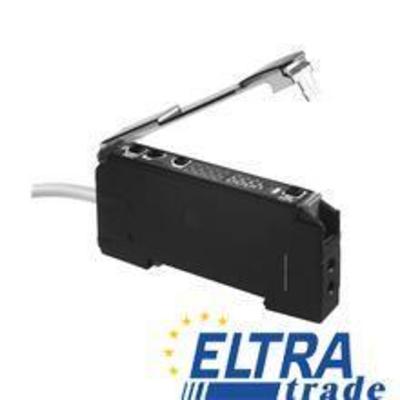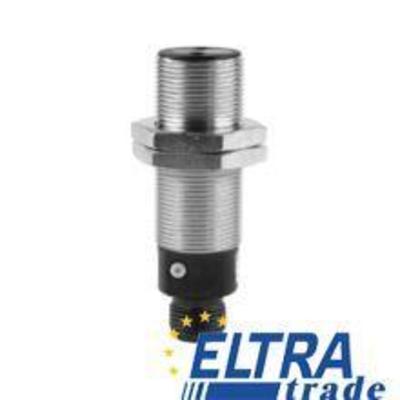Baumer Fiber optic sensors
art. 10135305
| particular characteristics | coaxial |
| type | Diffuse sensors |
| sensing distance Tw | 1 ... 60 mm |
| operating temperature | -30 ... +70 °C |
art. 10151375
| particular characteristics | array (fine light barrier) |
| type | through beam sensor |
| actual range Sb | 780 mm |
| operating temperature | -30 ... +70 °C |
art. 10240061
| particular characteristics | standard |
| type | Diffuse sensors |
| sensing distance Tw | 1 ... 300 mm |
| operating temperature | -30 ... +70 °C |
art. 10124815
| particular characteristics | small sensing head sensing head can be bent once |
| type | Diffuse sensors |
| sensing distance Tw | 1 ... 120 mm |
| operating temperature | -30 ... +70 °C |
art. 10123471
| particular characteristics | side view smooth sensing head without thread |
| type | through beam sensor |
| actual range Sb | 750 mm |
| operating temperature | -30 ... +70 °C |
| particular characteristics | array (fine light barrier) |
| type | through beam sensor |
| actual range Sb | 790 mm |
| operating temperature | -30 ... +70 °C |
| particular characteristics | array (fine light barrier) |
| type | through beam sensor |
| actual range Sb | 790 mm |
| operating temperature | -30 ... +70 °C |
art. 10135344
| particular characteristics | side view small sensing head smooth sensing head without thread |
| type | through beam sensor |
| actual range Sb | 165 mm |
| operating temperature | -30 ... +70 °C |
art. 10135341
| particular characteristics | ultra flexible |
| type | through beam sensor |
| actual range Sb | 140 mm |
| operating temperature | -30 ... +70 °C |
art. 10135297
| particular characteristics | ultra flexible |
| type | Diffuse sensors |
| sensing distance Tw | 1 ... 210 mm |
| operating temperature | -30 ... +70 °C |
art. 10135334
| type | Diffuse sensors (liquid level sensor) |
| measurement type | contact with medium |
| response time / release time | 0,05 ... 5 ms |
| operating temperature | -30 ... +105 °C |
art. 11045447
| actual range Sb (FSE 200C1002) | 340 mm |
| sensing distance Tw (FUE 200C1003) | 130 mm |
| light source | pulsed red LED |
| operating temperature | -20 ... +55 °C |
| version | 2 outputs |
| actual range Sb (FSE 200C1002) | 1200 mm |
| sensing distance Tw (FUE 200C1003) | 300 mm |
| operating temperature | -20 ... +55 °C |
| actual range Sb (FSE 200C1002) | 1200 mm |
| sensing distance Tw (FUE 200C1003) | 300 mm |
| light source | pulsed red LED |
| operating temperature | -20 ... +55 °C |
| version | slave |
| actual range Sb (FSE 200C1002) | 1200 mm |
| sensing distance Tw (FUE 200C1003) | 300 mm |
| operating temperature | -20 ... +55 °C |
Baumer fiber optic sensor
| version | integrated alarm output |
| actual range Sb (FSE 200C1002) | 320 mm |
| sensing distance Tw (FUE 200C1003) | 90 mm |
| operating temperature | -25 ... +55 °C |
art. 10215003
| type | intensity difference |
| light source | pulsed infrared diode |
| sensing distance Tw | 300 ... 1500 mm |
| operating temperature | 0 ... +65 °C |
art. 11224111
- art. 11224111
- Intiutive OLED display
- Programmable input configurations
- Crosstalk rejection between two sensors without a wire
- Six AUTOSET modes
- Advanced remote programming
| actual range Sb (FSE 200C1002) | 1200 mm |
| sensing distance Tw (FUE 200C1003) | 300 mm |
| light source | pulsed red LED |
| operating temperature | -20 ... +55 °C |
| version | small hysteresis |
| actual range Sb (FSE 200C1002) | 240 mm |
| sensing distance Tw (FUE 200C1003) | 70 mm |
| operating temperature | -20 ... +60 °C |
art. 10239451
- art.: 10239451
- Actual range Sb: 1200 mm
- Sensing distance Tw 240 mm
- 10 … 30 VDC
art. 10127710
| type | intensity difference |
| light source | pulsed infrared diode |
| sensing distance Tw | 60 ... 430 mm |
| operating temperature | -25 ... +55 °C |
art. 10151368
| particular characteristics | coaxial |
| type | Diffuse sensors |
| sensing distance Tw | 1 ... 400 mm |
| operating temperature | -30 ... +70 °C |
art. 10143979
| particular characteristics | coaxial |
| type | Diffuse sensors |
| sensing distance Tw | 1 ... 110 mm |
| operating temperature | -30 ... +70 °C |
art. 10151369
| particular characteristics | coaxial |
| type | Diffuse sensors |
| sensing distance Tw | 1 ... 86 mm |
| operating temperature | -30 ... +70 °C |
art. 10160423
| particular characteristics | coaxial |
| type | Diffuse sensors |
| sensing distance Tw | 1 ... 95 mm |
| operating temperature | -30 ... +70 °C |
art. 10151370
| particular characteristics | long distance |
| type | Diffuse sensors |
| sensing distance Tw | 1 ... 200 mm |
| operating temperature | -30 ... +70 °C |
art. 10135352
- through beam sensor
- parallel beam
- -30 ... 70 °C
art. 10135339
- through beam sensor
- heat resistant
- -30 ... 105 °C
art. 10151374
- through beam sensor
- heat resistant
- -60 ... 150 °C
 Baumer fiber optic sensors are miniature photoelectric sensors.
Baumer fiber optic sensors are miniature photoelectric sensors.
Fiber optics products is dived into several main categories depending on material and shape:
- With glass cables
- With plastic cables
- Cylindrical
- Square
- Miniaturized
- Specialized
Plastic fiber optics cables have good flexibility and durability. Plastic fiber allows bending cable with a diameter of only 1 mm. Such devices can operate in resistance circuits. They have a small sensing head, which allows them to work in limited spaces.
Glass fiber optics have hundreds of individual fibers in their design, each of them transmit its own part of the signal. The glass used by the system is a durable and heat-resistant material. Presented devices make measurements at distances up to 1.4 m even at constantly changing ambient temperatures.
Cylindrical fiber optics are units that have a cylindrical sensing head. It can be threaded or smooth depending on models. The manufacturer produces models with glass or plastic cables, as well as with axial or radial distribution of light.
Square fiber optics have a small flat design. Their housing is made in rectangular shape.
Miniaturized fiber optics are units with very small measuring head sizes (Ø0.82 mm).
Specialized fiber optics are devices designed for demanding applications. Chemical or oil-resistant, heat or cold-resistant options are available in such category.
Baumer hubner fiber optic are very compact and rugged optical sensors. They perform accurate measurements in cramped spaces even in harsh conditions.
More detailed information you can see here:

